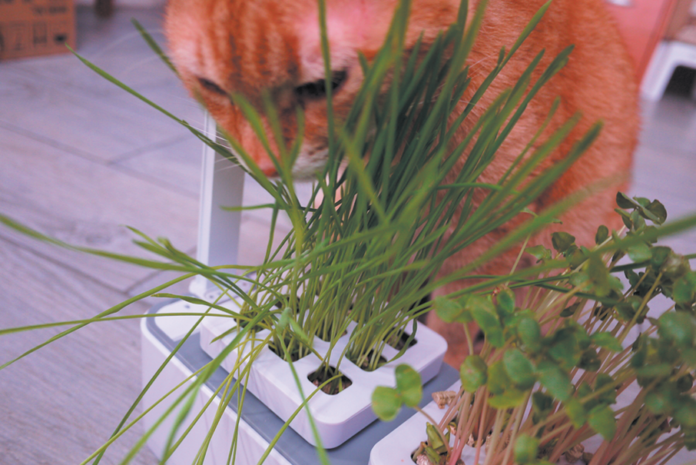Stuck indoors all day, cats are often looking for things to do. And one of them is to nibble on your plants. Why not cultivate some house plants that your cat will enjoy without you having to worry about toxicity? A few might even do double duty as garnishes on your own foods or as seasonings in sauces or soups. And in some cases, plants that can be grown indoors might even provide a health benefit for your feline pet.
Lemongrass gives off a pleasant citrus odor and can even help quell a cat’s tummy upset. It should be restricted to a nibble here and there rather than large amounts, which can lead to GI upset. (Take note: Lemongrass oil is not safe for cats.)
Valerian, with its purple blossoms, can provide a catnip-like fix for your pet, sending him running and dancing around the house.
Spider plants are good for an occasional nibble and, because they’re sturdy, provide for a good boxing session. Cats enjoy swatting at them.
Rosemary, parsley, basil, and dill are all safe for your cat and are often called for in savory recipes.
Note: many people assume that because catnip is in the mint family, all mint is safe for felines. That’s true with the exception of pennyroyal. Topped with an attractive cluster of light purple blossoms, pennyroyal can prove toxic to cats even though it is frequently touted as a natural ingredient in pet flea powders. It should not be used or grown in a home shared with cats. It can cause symptoms ranging from vomiting and diarrhea to seizures.
For more information on herb and plant toxicity when it comes to cats, visit the American Veterinary Medical Association at avma.org and search for “household hazards.” The list is continually updated as more information comes in.



